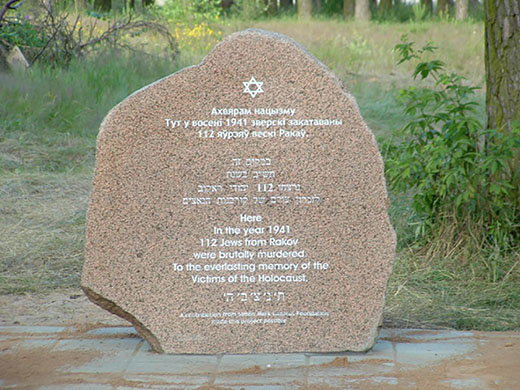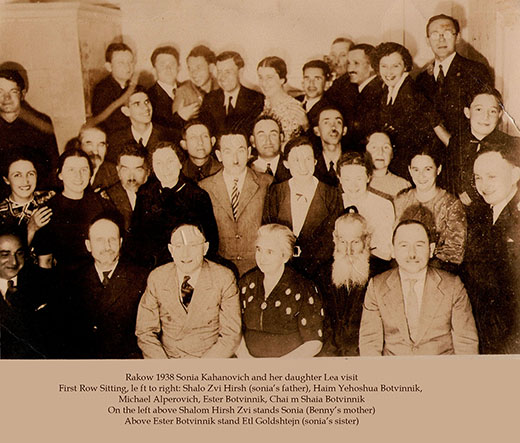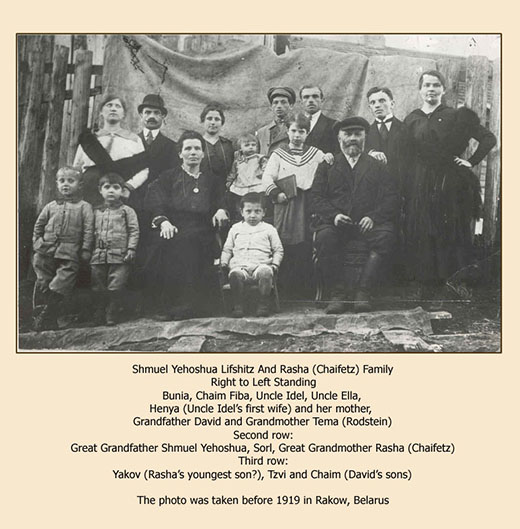HOLOCAUST
Testimony by Uri Finkel ,Translation by Sonia Kovitz
Our heroic Red Army drove them into a cul-de-sac, from which they managed to extricate themselves intact. For a few days after the battle, hundreds of troops stampeded over the cobblestones through the khoreve [ruined] streets. Around the Jewish besoylem [cemetery], where the Germans had carried out the hariges [killings] of Jews and honest Soviet citizens, were about 500 of their accursed henchmen. The hundreds of the Germans’ henchmen lay in a half meter deep ditch in the street.
Of the Jewish population of the shtetl we found the following persons alive:
- Masha Heyvich, a daughter of Itzhik Botvenik (mechanic) with her 12-year-old daughter Nechama and son Benyamin. The latter was in a partisan otryad [detachment], where he distinguished himself and was awarded a medal of the first degree. Masha and her daughter served in the same otryad.
- The partisan Hillel Eydelman, a grandson of Vigdor Losetser.
- The partisan Tevel Hashbuz, a grandson of Yoshe Gunevicher.
- David Grenholts and his son Oren. These two were sustained at the home a Polish nobleman for a lot of money.
- Shmerl Pashrelianiets and his brother. They were sustained by a White Russian peasant woman from the dorf [small village] Girevich. Later Shmerl married her.
- Motl Kaplan (of the Bershters) was a partisan.
- Berl Bonievitch was a partisan.
- A daughter of Mashe Raskin and her husband, who was from Lodz.
All these people were already living elsewhere, no longer in Rakov. They had moved to other places – “We cannot stay in a place where our blood was spilled,” they said.
Rakov, November 10, 1945. Uri Finkel.
P.S. a sorrowful pinkes: the Rakov ghetto was not saved. U. F.













